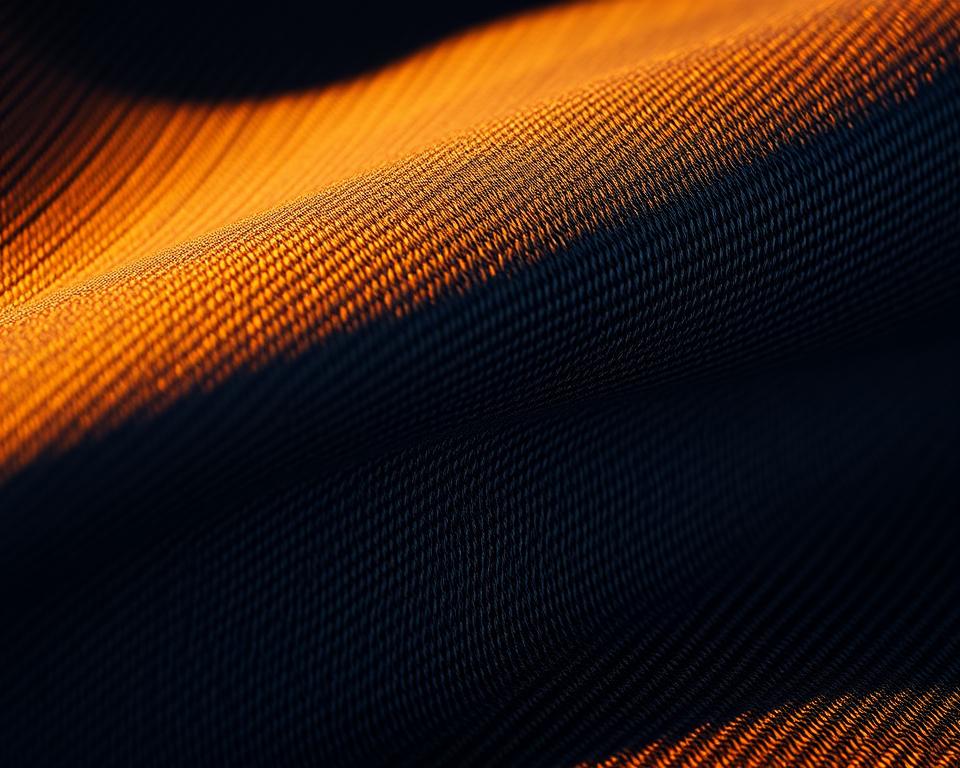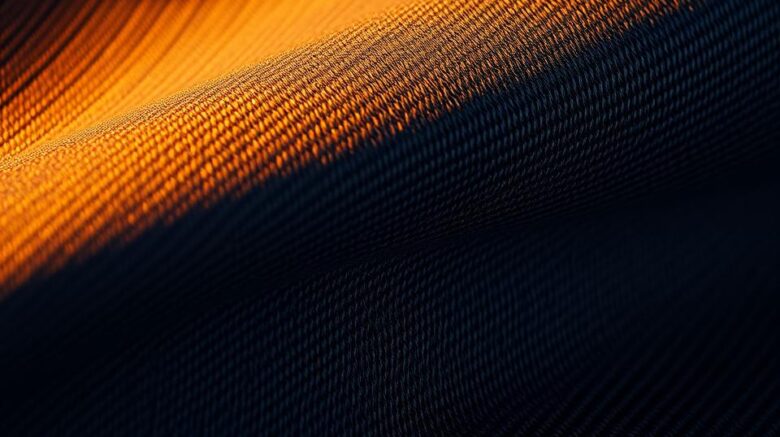The Ultimate Guide for Premium denim Edge-to-Edge Material
Ever pondered why some trousers feel like they’re designed for longevity a lifetime? The secret lies in the components and artistry. Take, for instance, the growing popularity of high-end selvedge. This isn’t just any textile—it’s a testament to superiority and heritage.
Currently, increasingly more individuals are opting for these timeless textiles for their durability and classic selvedge denim fabric appeal. Whether you’re a DIY sewist or a denim lover, there’s an exceptional aspect about working with high-quality natural fiber and thread. It isn’t solely concerned with constructing pants; it involves crafting something that tells a story.
At Core Fabrics, we’ve curated a collection of 14.25oz certified organic cotton and elastic choices. These materials are perfect for everything from raw trousers to couture jacket blueprints. Eager to discover the world of premium fabrics? Let’s dive in.
What Is Denim Selvedge Fabric?
What makes certain jeans distinguish themselves with their distinctive, finished without extra steps seams? The secret is found in the selvedge denim, a premium material known for its robustness and vintage appeal. Differing from regular textiles, this type of fabric is crafted using classic methods that have stood the test of time.
Understanding Selvedge Denim
Selvedge denim is produced via retro shuttle looms, which generate minimal widths of about 30-35 inches. They intertwine the material in a method that delivers self-finished edges, often highlighted by a characteristic red line. Such a process guarantees the textile is firmly crafted and extremely robust.
Current looms, on the other hand, yield broader fabric but do not offer the same level of craftsmanship. The imperfections in selvedge, like twists in the leg or uneven textures, are embraced as elements of its beauty. This philosophy, often referred to as “wabi-sabi”, honors the aesthetic of natural flaws.
How Selvedge Denim Is Made
The creation of selvedge denim entails a exacting process. Shuttle looms cross the filling yarns back and forth, resulting in a thick and robust material. This process stands in contrast with new-age looms, which prioritize speed and efficiency over quality.
Brands like Karson Denim uphold vintage Japanese weaving techniques from the 90s. They deliberately incorporate imperfections to preserve the authenticity of the fabric. All products is assessed on a 4-point system, confirming it fulfills the highest standards of quality.
| Feature | Selvedge Denim | Current Denim |
|---|---|---|
| Span | 30-35 inches | 60+ inches |
| Fabrication Method | Shuttle Loom | Modern Loom |
| Texture | Uneven, Imperfect | Consistent |
| Durability | Exceptional | Moderate |
“The allure of selvedge resides in its natural irregularities—every imperfection narrates a tale skill and legacy.”
The History of Selvedge Denim
From humble beginnings to international fame, the tale of these textiles is vibrant and inspiring. Originally developed as durable workwear in the 17th-century France evolved into a mark of timeless style and craftsmanship.
Historical Roots
The roots of this textile trace back to Nîmes, France, where it was referred to as “serge de Nîmes.” First intended for workers, it was crafted out of robust cotton and yarn. Its strength made it a favorite among laborers during the historic Gold Rush.
During the twentieth century, it had become a staple for pants. The shuttering of the Cone Mills White Oak facility marked a turning point. This change enabled Japanese craftsmen to reintroduce classic fabric-making practices.

Advancements in Production
After World War II, Japan developed a deep appreciation for retro American culture. Craftsmen revitalized classic looms to produce authentic reproductions. This commitment to craftsmanship secured the survival of selvedge as a unique product.
Currently, innovations from Italy and Turkey have launched eco-friendly blends and elastic selections. These modernizations have widened the attraction of this timeless fabric. Within Core Fabrics, we source globally, from Montréal to Asia, to offer you the finest standards.
“The history of selvedge is a testament to the enduring value of craftsmanship and legacy.”
The Benefits of Selvedge Denim?
Why does selvedge denim shine in the realm of top-tier materials? Its unique qualities and incomparable robustness render it popular among aficionados and creatives alike. Be it that you are crafting jeans or a structured jacket, this material provides a fusion of heritage and updated style.
Characteristic Features of Selvedge
Selvedge denim is known for its dense construction, which boosts tear resistance and fade potential. Unlike standard materials, selvedge denim material is crafted using classic shuttle looms, yielding a more compact and extra robust product. In doing so, it secures that every item possesses a distinct surface and individuality.
Here’s what makes it special:
- Textured, firm raw denim offers a contrast to laundered, relaxed stretch options.
- The sanforization process ensures predictable sizing, while raw options offer a unique shrinkage journey.
- Available weights span from 9.5oz Eco Finish to 14.25oz Organic, suited for different needs.
Sturdiness and Lifespan
One of the key attributes of selvedge denim is its enduring nature. The dense fabric structure boosts robustness while enabling characteristic wear patterns over time. This makes it a valuable investment for those looking for timeless pieces.
Important aspects:
- Fabrics weighing between 12oz and 14oz are perfect for form-fitting jackets and jeans that mellow with time.
- Opt for the 14.25oz True Indigo for traditional jean lifespan.
- Green alternatives, including recycled cotton with indigo blends, contribute to a sustainable collection.
At Core Fabrics, our collection includes a variety of options to suit your needs. From raw to sanforized, each piece is crafted to deliver exceptional quality and value.
Selvedge vs. Wide Denim: A Comparison
In the creation of durable and stylish garments, the decision of material is pivotal. Two popular options are selvedge and wide denim, both offering different features. Understanding their differences can help you choose the best option for your endeavor.
Key Differences in Weaving Techniques
Selvedge denim is produced using classic shuttle looms, yielding slim widths of 30-35 inches. This selvedge denim jacket process creates secure finishes, often featuring a characteristic red line. Conversely, wide denim employs advanced projectile looms, yielding widths of 60 inches or more.
Old-style shuttle looms yield roughly 3m per minute, while modern projectile looms reach speeds of 30 meters per minute. Such speed differences influence both the expense and the texture of the final product.
Pros and Cons of Each Type
Selvedge denim is known for its premium quality and durability. Its slender dimension suits it well for applications where visible hems or patches are desired. However, it can be more expensive, typically around $23 per meter.
Wide denim is budget-friendly, typically costing $8 per half-meter. Its wider width minimizes excess, making it suitable for large projects like upholstery. However, it does not feature the unique edge finish of selvedge.
| Attribute | Selvedge Denim | Wide Denim |
|---|---|---|
| Span | 30-35 inches | 60+ inches |
| Method | Classic Shuttle Loom | Projectile Loom |
| Production Speed | 3 meters per minute | 30 meters per minute |
| Expense | $23/meter | $8/half-meter |
When precise, structured edges are required—as in Grainline Thayer jackets—selvedge wins out. Conversely, wide denim is ideal for extensive projects due to its efficiency. Evaluate your project specifications to choose wisely.
Working with Selvedge Denim
Working with premium materials can elevate your sewing projects to the next level. Whether you’re crafting pants, blazers, or dresses, grasping fabric quantities, proper sewing methods, and maintenance guarantees a polished result. We will examine ways to best utilize this classic material.
Fabric Quantities for Your Projects
Determining the proper yardage is key to a successful project. Approximately 3-3.3 yards is necessary for men’s jeans, considering defects and shrinkage. For trucker jackets, expect to use around 3.3 yards, while skirts can be made with just 2 yards.
Creative pattern placement can help manage imperfections in the material. Embrace the natural defects by weaving them into your creative design.
| Project | Yardage Needed |
|---|---|
| Jeans for Men | 3–3.3 yards |
| Trucker-Style Jacket | 3.3 yards |
| Skirt Item | 2 yards |
Advice for Sewing and Longevity
The correct gear and skills secure a refined outcome. Select #70–110 pins and foot accessories made for robust textiles. For contrast stitching, Gütermann rPET thread is a reliable choice.
Consider these extra tips:
- Employ a tailor’s clapper to achieve crisp creases without gloss.
- Our denim kits from Core Fabrics comprise topstitch thread, rivets, and 9mm jeans buttons to ensure a refined result.
- When sturdy borders are needed, such as in jackets, selvedge is optimal.
Proper care extends the life of your creations. Limit washing and allow to air dry for optimal durability. With these tips, your projects will stand the test of time.
Wrapping It Up
Crafting with premium materials isn’t just about durability—it’s about creating something with character. Selvedge denim embodies this principle, fusing artisanal charm with robust strength. Whether you’re sewing jeans or a structured jacket, this material tells a story with every stitch.
With Core Fabrics, unleashing your creative potential is effortless. Experience our swatch service to gauge texture and weight prior to purchase. Furthermore, take advantage of free shipping for orders above $150 USD in North America.
Eco-friendly mixtures and classic washes are paving the way for the next generation of cotton fabrics. These trends offer new ways to add sustainability and style to your wardrobe.
Ready to dive into the world of premium materials? Shop now and discover the value of crafting with purpose. Your subsequent creation may well become an enduring classic.
